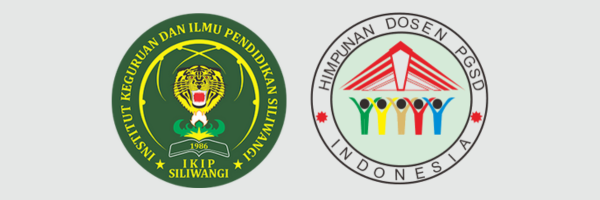SCIENCE LEARNING IN PRIMARY SCHOOL IN THE PERSPECTIVE OF NATURE OF SCIENCE: A CASE STUDY IN THE FIFTH GRADE
DOI:
https://doi.org/10.22460/pej.v4i1.1613Abstrak
The case study of elementary school science learning is performed in the fifth grade of a primary school located in Bandung. The study aims to describe the extent to which the nature of the sains principle is identified through classroom learning. In this study, the data used include the document of learning draft, teacher’s point of view towards science and its learning, learning activities documentation, and school principal’s point of view about learning in general including the expectation towards science learning. In terms of the main objective of science learning, students’ initial ideas about science triggered in the context of learning problems used can be explored properly through answers to questions raised by the teacher as well as students’ conclusions or statements on the studied problem. The study has successfully identified seven aspects of the nature of science in learning, although the depth and wholeness of these aspects still need further development in the future. Based on the result of the study, it is concluded that a progressive effort is still needed to improve teachers’ beliefs system and their learning.
Referensi
AAAS (1993). American Association for the Advancement of Science. Benchmarks for Science Literacy. New York: Oxford University Press.
Abd-El Halick, F., & Lederman, N. G. (2000). The influence of history of science courses on students’ views of nature of science. Journal of Research on Science Teaching, 37(10), 1057- 1095.
Aikenhead, G. (2006). Science Education for Everyday life. New York: Teachers’ College Press.
Arkerson, V. L., & Donnelly, L. A. (2010). Teaching Nature of Science to K-2 Students: What understandings can they attain? International Journal of Science Education, 32(1), 97-124.
Akerson, V. L, & Hanuscin, D. L. (2007). Teaching nature of science through inquiry: The results of a three-years professional program. Journal of Research in Science Teaching, 44, 377-394.
Akerson, V. L. & Volrich, M. (2006). Teaching nature of science explicitly in a first grade internship setting. Journal of Research in Science Teaching, 43, 377-394.
Anderson, C.W. & Smith, E.L. (1986). Children’s conception of light and color: Understanding the role of unseen of rays. East Lansing, MI: Institute for Research on Teaching.
Ary, D., Jacobs, L.C., & Sorensen, C. (2010). Introduction to Research in Education. United States: Wadsworth Cengage Learning.
Bybee, R. W. (1997). Achieving scientific literacy: From purposes to practices. Portsmouth, NH: Heinemann.
Chinn, C. A., & Brewer, W. F. (1993). The role of anomalous data in knowlwdge acquisition: A theoretical framework and implications for science instruction. Review of Educational Research, 63, 1-49.
Feldman, A. (2000). Decision making in the practical domain: A model of practical conceptual change. Science Education, 84, 606-623.
Fellows, N.J. (1994). A window into thinking: Using students writing to understand conceptuan change in science learning. Journal of Research in Science Teaching, 31, 985-1001.
Fleer, M. (1992). Identifying teacher-child interaction which scaffolds scientific thinking in young children. Science Education, 76, 373-397.
Gallagher, J., & Harsch, G. (1997). Scientific Literacy: Science education and secondary school students. In W. Greberdan C. Bolte (Eds.). Scientific Literacy: An International Symposium. (p. 13-34). Germany: IPN-KIEL
Graber, W., Erdmann, T., & Schlieker, V. (2001). ParCIS: Partnership between Chemical Industry and Schools. Germany: IPN-KIEL.
Harlen, W., & Qualter, A. (2004). The Teaching of Science for Primary Scools (Forth Edition). London: David Fulton Publishers.
Hesse, J.J., & Anderson, C.W. (1992). Students’ conceptions of chemical change. Journal of Research in Science Teaching, 29, 277-299.
Joshua, S., & Dupin, J.J. (1987). Taking into account students conceptions in instructional strategy: An example in physics. Cognition and Instruction, 4, 117-135.
Keys, P. (2006). A knowledge filter model for observing and facilitating change in teachers’ beliefs. Journal of Educational Change, 8, 41-60.
Khisfe, R., & Abd-El Chalick, F. (2002). The influence of explicit and reflective versus implicit enquiry-oriented instruction on sixth graders’ views of nature of science, Journal of Research on Science Teaching, 39(7), 551-578.
Lamanauskas, V. (2009). The Process of Natural Science Education in Primary School: the Importance of Chemistry Component. In M. Bilek (Ed.). Research, Theory and Practice in Chemistry Didactics, XIX, 1st Part: Research Articles and Theoretical Studies (pp. 13-20). Hradec Kralove: Gaudeamus.
Lawson, A.E., Abraham, M.R., & Renner, J.W. (1989). A theory of instruction: Using the learning cycle to teach science concepts and thinking skills. (NARST Monograph 1).
Lederman, N. B. (2007). Nature of science: Past, present, and future. In S.K. Abell, and L. G. Lederman (Eds.), Handbook of Research on Science Education, (pp. 831-880). New York: Routledge
Lederman, N.G., Lederman, J.S. & Antink, A. (2013). Nature of science and scientific inquiry as contexts for the learning of science and achievement of scientific literacy. International Journal of Education in Mathematics , Science and Technology, 1(3), 138-147).
Lin, J. (2016). Using a learning cycle to deepen chinese primary students’ concept learning of the ‘phases of the moon’. Eurasia Journal of Mathematics, Science, & Technology Education, 12(11), 2861-2874.
Liu, S. Y. & Lederman, S. G. (2002). Taiwanese students’ views of nature of science. School Science and Mathematics, 102(3), 114-122.
Lunn, S. (2002). What We Think We can Safely Say: Primary Teachers Views of the Nature of Science. British Educational Research Journal, 28, 649-672.
McComas, W. F. (1998). The nature of science in science education: Rationales and strategies. Netherland: Kluwer Academic Publisher.
Millar, R., & Osborne, J. (1998). Beyond 2000, Science Education for the Future. London: King’s College London, School of Education.
Morine-Dershimer, U., & Kent, T. (1999). The complex nature and sources of teachers’ pedagogical content knowledge. In J. Gess-Newsome & N. Leaderman (Eds.). Examining pedagogical content knowledge: Yhe construct and its implications for science education (pp. 21-50). Dordrecth. The Netherlands: Kluwer Academic
OECD (2003). The PISA 2003 Assessment Framework. Paris:OECD
Osborne, R., dan Freyburg, P. (1985). Learning inScience: The implication of children’s science. Birkenhead, Auckland: Heinemann.
Piaget, J. (1929). The child’s conception of the world. NewYork: Harcourt: Brace.
Posner, G.J., Strike, K.A., Hewson, P.W., & Gertzog, W.A. (1982). Accommodation of a scientific conception: Toward a theory of conceptual change. Science Education, 66(2): 211-227.
Sandoval, W.A. (2001). Students’ use of data as evidence in scientific exlpanations. Paper presented at the Annual Meeting of the American Educational Research Assn. Seatle, WA, April 10-14.
Scharmann, L.C., Smith, M. U., James, M. C., & Jensen, M. (2005). Explicit reflective nature of science instruction: Evolution, intelligent design, umbrellaology. Journal of Science Teacher Education, 16, 27-41.
Syamra, D., Karina, K., & Harahap, F. (2014). Inspirasi Mengajar Pembelajar Sejati: Cerita Para Guru Sekolah GagasCeria. Bandung: Kinarya Gagas
Shulman, L. (1986). Those who understand: Knowledge growth in teaching. Educational Researcher, 15(2), 4-14.
Starman, A. B. (2013). The case study as a type of qualitative research. Journal of Contemporary Educational Studies, 1(13), 28-43.
Stavy, R. (1991). Using analogy to overcome misconceptions about conservation of matter. Journal of Research in Science Teaching, 28, 305-313.
Stein, M., Barman, C., dan Larrabee, T. (2007). What are the thinking? The development and use of an instrument that identifies common science misconceptions. Journal of Science Teacher Education, 18, 233-241
Thomson, S., & De Bortoli, L. (2008). Exploring Scientific Literacy: How Australia measures up. Camberwell, Victoria: Australian Council for ducational Research Ltd.
Tobbin, K., & McRobbie, C. (1997). Beliefs about The Nature of Science and the Enacted Science Curriculum. Science and Education, 6, 355-371.
Tytler, R. (2010). Ways forward for primary science education: a review commissioned by the Swedish National Agency for Education. Melbourne: Deakin University.












